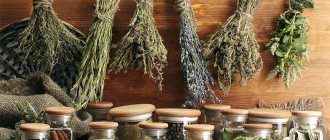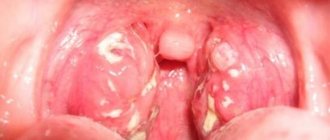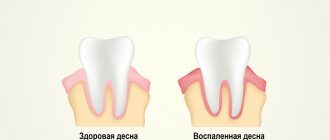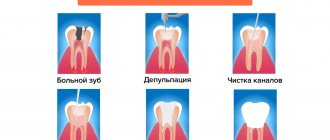Dental health is closely related to the health of your gums. If everything is fine with some, then the safest conditions in the oral cavity are created for others. However, with weakened, painful, often inflamed gums that are prone to bleeding and pain, serious dental problems can occur.
We often go to the dentist, get new fillings and treat dental caries, but we often forget about the health of our gums. They also need various preventive measures. First of all, care should be taken to strengthen them. We will tell you what safe methods can be used for this.
Don't forget to rinse after meals
Rinsing your teeth only during and after brushing is a big mistake. Any dentist will advise you to carry out this procedure more often, preferably after every meal.
Leftover food in the mouth can cause gum inflammation. Use plain water or special solutions.
Advice! It is especially important to rinse your mouth after eating sweets. Sugar can be the enemy of your teeth and gums. In just a few hours it creates a breeding ground for bacteria.
Basic rules for gum care
To maintain teeth and healthy gums, you must follow several rules:
- General oral and dental hygiene should not last less than 5 minutes. You should brush your teeth three times a day.
- The gums usually begin to hurt at the base of the tooth, in the place where plaque has formed on the tooth. To prevent the formation of plaque, the teeth at the base must be cleaned with a rotating movement of the toothbrush so that its bristles penetrate into the interdental space and clean the gum at the entrance of the tooth.
- Your toothbrush should be changed every three months, and after the last brushing of your teeth, soak the brush in a disinfectant solution overnight.
- When brushing your teeth, be sure to clear your tongue of plaque. The fairly loose tissue of the tongue is a favorable environment for the proliferation of pathogenic bacteria.
- If for any reason you are unable to brush your teeth, then you need to prepare an aqueous solution with baking soda or table salt.
Dental elixirs, which are made from extracts of medicinal herbs, help take care of your teeth. Such elixirs help to effectively clean the mouth and teeth.
Use antiseptics for prevention
Antiseptic solutions are not suitable for continuous use. They are usually prescribed for the treatment of dental diseases, after tooth extraction or other complex operations in the oral cavity.
In addition, antiseptics are recommended for inflammation and bleeding gums to prevent the proliferation and increased activity of bacteria.
What antiseptics can be used to rinse your mouth?
- Furacilin. It is usually sold in the form of yellow tablets that need to be dissolved in a glass of water. The solution has a slight salty taste, usually does not cause irritation and does not increase gum inflammation.
- Miramistin. At the pharmacy, this product can most often be found in the form of a bottle of liquid. The box may contain special attachments. Miramistin solution has virtually no pronounced taste and does not cause discomfort.
- Iodinol. Sold in glass bottles, dark in color. A few drops of the product are mixed with water to obtain a solution. This drug has a pronounced antiseptic effect and a slight unusual taste. May slightly increase gum irritation if inflammation is present.
- Chlorhexidine. Sold in plastic bottles. The solution based on this drug has a mild medicinal aftertaste. Inflammation usually does not increase after use.
Causes associated with dental diseases
The cause of loose teeth in the gums can be various dental diseases, such as periodontitis, periodontal disease, periodontitis and gingivitis. Incorrect bite can also trigger the appearance of this disease.
With gingivitis, many bacteria live in the oral cavity, which cause bleeding gums and, as a result, loosening of teeth.
With periodontitis, the same symptoms are present, but they are also accompanied by bad breath and inflammatory processes in the gums begin. The cause of both diseases is poor oral hygiene.
Periodontal disease is not associated with inflammatory processes and is accompanied by a decrease in the bone walls between all teeth, resulting in bleeding and itching in the gums, and the teeth become mobile and their sensitivity increases.
Fight bleeding gums
If the slightest mechanical impact causes pain and easily injures the gums, causing bleeding, then this cannot be considered a normal phenomenon.
First, you need to contact your dentist and find out the cause of bleeding and weak gums. Secondly, you need to use comprehensive methods to treat them and eliminate the problem.
Treatment methods
If you find that there is bleeding from your gums, you should immediately contact your dentist. The doctor will determine the cause and prescribe adequate treatment. The most effective ways to combat bleeding gums are:
- Professional teeth cleaning and ultrasonic calculus removal.
Waves completely eliminate plaque. During pregnancy, methods that are safe for the fetus are used.
- Rinse with antiseptics.
Chlorhexidine, Miramistin, Rotokan, Chlorphyllipt, Furacilin, Tantum Verde, etc. are prescribed as a solution for sanitation. It is acceptable to use decoctions of sage, chamomile, calendula, and oak bark. The procedure is carried out in the morning, before bed and after each meal. The course lasts no more than 10 days.
- Dental gels and ointments.
The most effective drugs are Metrogyl Denta, Asepta, Dental, Cholisal, Parodium, Stomatofit, Solcoseryl, Salvin. The composition quickly penetrates the mucous membrane, has an antimicrobial effect, relieves inflammation, pain and bleeding. The products are applied twice a day, after rinsing and drying with a cotton swab.
- Additional medications.
For concomitant diseases of the oral cavity, antibiotics, painkillers, “Parodontocid” spray, lozenges Septolete, Faringosept, Grammidin, etc. are prescribed.
- Physiotherapy.
Gum restoration is accelerated by procedures such as ultraviolet irradiation, electrophoresis, current treatment, oxygen treatment, balneo-, light- and vacuum therapy. Various types of massage are effective: water, hardware, manual. As a rule, a course of physiotherapy includes 5 procedures.
- Proper oral care.
It is necessary to brush your teeth twice a day. Dentists recommend using only soft brushes marked Soft and pastes for bleeding gums: Parodontax, Lacalut, ROCS, BlanX, Mexidol Dent. After eating, you need to carefully remove food debris with dental floss and use an alcohol-free mouth rinse: Silca, Lacalut, PresiDent, Forest Balm. You can also use a solution of water with salt or hydrogen peroxide.
- Taking vitamin complexes and immunomodulators.
Popular drugs are “Dentovitus”, “Alphabet”, “Vitrum”, “Immunal”, “Calcinova”, “Calcium D3 Nycomed”, and lemongrass tincture. To reduce the fragility of capillaries, Ascorutin is additionally prescribed.
- Nutrition correction.
It is recommended to avoid sugar, bread, spicy, sour and salty foods, carbonated drinks and alcohol. The diet should include fresh juices, vegetables and fruits, foods rich in protein, vitamins C, B, K, E. As a result, periodontal tissue will be strengthened, and the mucous membranes will recover faster. Spices are also useful: ginger, wasabi, sesame, cinnamon. Spices stop the proliferation of bacteria and relieve inflammation.
There are also emergency measures. If there is bleeding from the gums, it is necessary to apply a swab soaked in ice water to the tissue. This will quickly soothe the gums and stop bleeding.
The best treatment is prevention. Visit your dentist twice a year. A specialist will detect and eliminate all problems with teeth and gums in a timely manner. If you follow your doctor's recommendations, you will forever forget about bleeding gums.
This article is for informational purposes only, please consult your doctor for details! Ask your doctor about contraindications and side effects.
Massage your gums to improve blood circulation
Strengthening your gums is not just about using toothpastes and rinses. Gums need normalization of blood circulation. This requires a massage. It can be done using circular movements with your fingers or a soft toothbrush.
You can also find special brushes for gum massage on sale. By improving blood circulation, you can strengthen them over time and prevent many complications.
Differences between periodontal disease and periodontitis
Patients often confuse the names, and therefore turn to dentists, complaining of periodontal disease. In 90-93% of cases, ordinary periodontitis is detected. It is widespread. Our disease is rare.
Periodontitis manifests itself through:
- pain on palpation, when brushing teeth;
- bleeding;
- redness of the gum margin;
- swelling;
- cyanosis.
In severely advanced cases, there may also be headaches, fever and severe toothache. All this leads to refusal of food and hygienic cleaning of the oral cavity.
By place of development:
- localized - a small lesion affecting only one tooth; often results from mechanical damage to tissue;
- generalized - damage to several teeth also affecting the gingival and bone tissue.
According to the nature of the course:
- acute - characterized by sudden pain attacks and rapid development of symptoms;
- chronic periodontitis is the transition of untreated acute periodontitis to a chronic form, in which pain and other symptoms practically disappear, but the disease progresses and deforms the tissue.
Folk remedies for gum inflammation
Methods and methods of traditional therapy show particularly high effectiveness in the treatment of gum inflammation. Using various folk recipes, you can not only get rid of pain syndromes, but also actually cure inflammatory processes in the oral cavity at home.
Various folk remedies against gum inflammation
Treatment of gum inflammation, as an area of the body that is open and accessible to external influences, most often involves all kinds of rinses, oral applications and baths with anti-inflammatory, antiseptic solutions. In folk medicine, these are infusions, decoctions and rub-ins based on medicinal raw materials, as well as products of natural mineral origin. Most of these medications can be easily made at home.
Treatment of gums with sea salt
All symptoms of gum inflammation, from redness, bleeding to pustules and ulcers, without proper treatment leading to periodontal disease, can be easily eliminated with an ancient and well-tested remedy - the so-called Indian toothpaste. The main ingredients of this product are sea salt in the amount of 3 tbsp. l. and dried banana peel 2 tsp. The peel and salt are ground separately in a coffee grinder to a powdery state. Olive oil is added to the measured salt and peel until medium thick. The product is rubbed into the gums for 10 minutes in the morning and evening.
Honey tar will relieve inflammation
When a tumor or subdental flux forms, traditional medicine offers an original and very effective folk method. Half a centimeter of linden liquid honey is poured into the bottom of a small enamel container and an old nail with a thick layer of rust over the entire surface, pre-heated red-hot on a gas or electric oven, is placed in it. As a result of the reaction in the honey, a viscous substance similar to tar is formed around the nail. It is this resulting substance that is lubricated on the gums before bed to treat abscesses. The application of birch tar has a similar effect on the gums, since it has a pulling ability.
Recipe for abscess on gums
Before any treatment procedure on inflamed gums, it is necessary to thoroughly clean the oral cavity. For abscesses on the gums, folk therapy offers a recipe based on egg yolk. To the fresh yolk of one egg, add olive oil and powdered sugar, 1 teaspoon each. l. The resulting mixture is applied to a tampon and applied to the sore spot until the inflammation is relieved. A very effective recipe is also an infusion of a pinch of St. John's wort brewed in 200 ml of water, which should be used to rinse your mouth before bed and in the morning. These preparations are prepared fresh each time, immediately before use.
Medicinal gum against inflammation
Especially for the prevention and treatment of gum inflammation at home, you can easily make healing chewing gum. For this purpose it is used:
- 5 drops of peppermint essential oil;
- 75 g beeswax;
- 1 tbsp. l. honey;
- a couple drops of lemon juice.
The wax is melted in a water bath and the remaining ingredients are introduced one by one. The resulting wax-honey mass, after cooling, is formed into chewable lozenges. You can chew this gum throughout the day and over time you will notice a significant improvement in the condition of your gums. This chewing gum is also useful for coughs and sore throats.
Herbs against gum disease
The most popular and simple home method of treating gums is popularly considered to be rinsing with healing herbal infusions. To prepare infusions and decoctions, several medicinal herbs are used, taken in equal proportions and brewed with boiling water. The most widely used herbs are chamomile, calendula, sage, and oak bark. By combining and periodically changing treatment methods and healing ingredients, you can get the maximum benefit from the use of folk remedies.
Healing tooth powder
Of great interest is the recipe for anti-inflammatory medicinal powder based on medicinal herbs. To do this, you need to take a simple tooth powder and add galangal grass, bergenia root and 5 pieces of spicy cloves, ground in a coffee grinder. This powder takes on a pinkish-gray color. Use it morning and evening to brush your teeth for 3 minutes. It is very good to finish the procedure by rinsing with chamomile decoction. This tooth powder is also good for preventive purposes.
Healing lotions from medicinal herbs
Treatment of gum pathology in folk medicine often uses alder infusions. To prepare, take a handful of dried alder cones, crushed in a blender, and brew 200 ml of boiling water. After infusion for an hour, the infusion is strained and used for rinsing the mouth. Oil from St. John's wort flowers relieves inflammation of the gums well. To do this, St. John's wort flowers are steamed and infused in olive oil until red. You can also use ground elderberry and viburnum berries mixed in olive oil. A simple decoction of eucalyptus leaves is very effective for treating gums.
Shilajit, propolis and essential oils against gum inflammation
For an effective anti-inflammatory solution in the treatment of inflamed gums, mumiyo, propolis, and essential oils are used. To rinse, 3 g of mumiyo is dissolved in 100 ml of warm water. Propolis tincture for the same purpose is made from 35 g of raw material, infused for 1 week in alcohol. A variety of ready-made or home-made essential oils are successfully used to treat gums. To rinse the mouth, it is recommended to use lukewarm decoctions or infusions, since too cold or hot medicine reduces the effectiveness of the procedure, even increasing irritation.
Treatment of gum inflammation
Catarrhal gingivitis is usually a complication of infectious diseases (diphtheria, measles, scarlet fever and a number of others), therefore, diagnostic measures are first carried out to identify the underlying pathology.
Local treatment is to relieve swelling and redness, relieve gum pain, and prevent secondary infection. In children, the catarrhal form of the disease is treated with plant phenolic compounds, multivitamin complexes, and anti-inflammatory steroids.
The choice of treatment regimen for hypertrophic gingivitis depends on the severity of the disease and the severity of symptoms. Quite often, the help of related specialists (endocrinologist, psychoneurologist) is required. In addition, it is necessary to eliminate local provoking factors (bad fillings, tartar, malocclusion and a number of others).
The main stages of treatment of hypertrophic gingivitis are the elimination of exudative phenomena and the removal of inflammation. For this purpose, the use of anti-inflammatory drugs, hygiene products, and NSAIDs is indicated.
In addition, patients are prescribed herbal astringents and antibacterial drugs (decoction of nettle leaves, yarrow, sage and a number of others).
In the ulcerative-necrotic form of the disease, necrosis of the gum tissue occurs, and the inflammatory process penetrates into the deep tissues. Treatment in this case is prescribed depending on the severity of the pathological process, the age of the patient, and the type of pathogen.
Patients are advised to drink plenty of fluids to quickly remove toxins from the body, a diet rich in vitamins, microelements, proteins, and antihistamines. In particularly severe cases, surgery may be required.
Classification of gum inflammation
There are several classifications of the disease:
According to the current, the following types of gingivitis are distinguished:
- acute – severe inflammation of the gums occurs, which is accompanied by bleeding and pain;
- chronic - the disease occurs cyclically, periods of relative calm are replaced by exacerbation of gingivitis, which most often occurs in winter and spring, when the body is most weakened.
Based on the nature of the lesion, the following types of gingivitis are distinguished:
- catarrhal;
- hypertrophic;
- atrophic;
- ulcerative;
- ulcerative-necrotic.
Severity of gum inflammation:
- mild – the interdental papillae are mainly affected, the disease is mild and usually ends with complete recovery;
- medium - in addition to the interdental papillae, the pathological process involves the marginal parts of the gums;
- severe - inflammation covers the entire gum, including its alveolar part.
Based on localization, the following types of gingivitis are distinguished:
- localized – one or more areas of the gum are inflamed;
- generalized – the entire gingival space of one or both jaws is affected.










